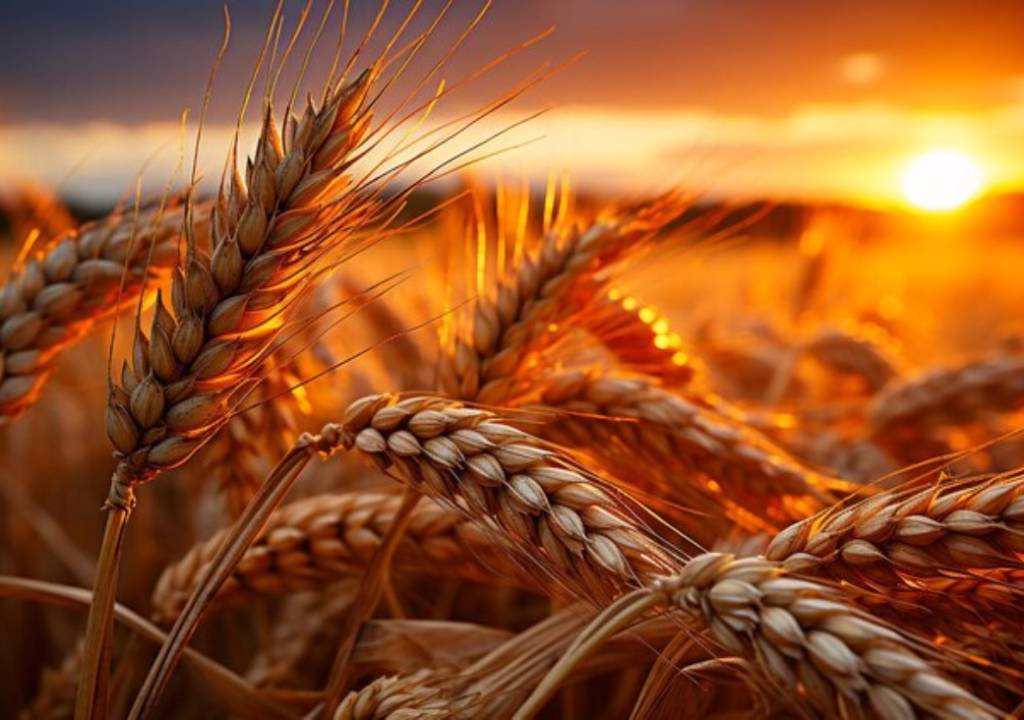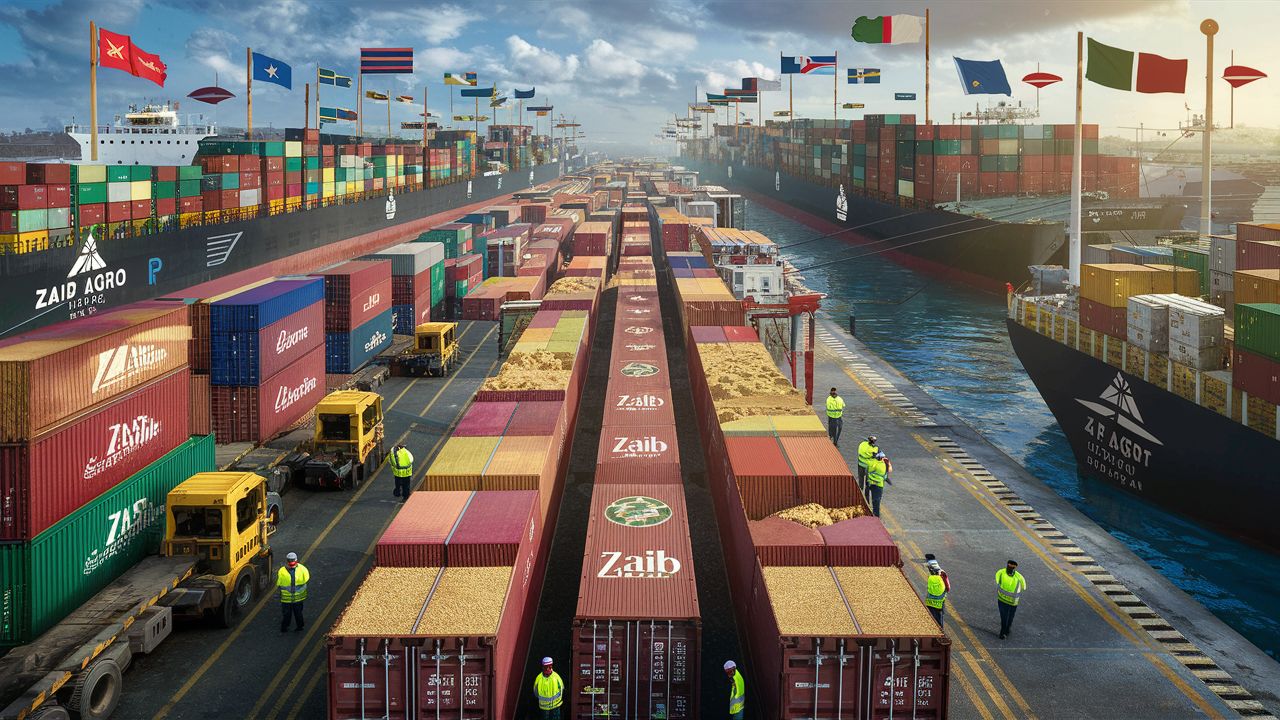A nutrient-enhanced wheat variety is gaining popularity in Pakistan thanks to its increased food security, higher incomes, and health benefits.
Pakistani wheat flour, or atta, provides 72% of the caloric energy in the average Pakistani diet. Pakistan depends mainly on this crop for its food, which is better from a nutritional standpoint than most cereals and other foods. Approximately 25 kg of wheat is consumed per capita in our country each year, the highest amount in the world, with our consumption being 124 kg per capita. We can see from the above fact how vital wheat is to our country. Consequently, climate and weather variations directly affect the country’s economy and social balance every year by affecting the total yield of wheat. Rabi crops are grown in winter, including wheat. Wheat is sown in Pakistan between October and December and harvested between March and May. November and December are the sowing months of wheat in Punjab, while April and May are the harvesting months.
Wheat Production in Pakistan
It accounts for about 40 percent of the country’s cultivated land (around nine million hectares) and is one of the most widespread crops in Pakistan during the winter or “Rabi” season. Approximately 10 percent of agriculture’s value-added and 2.1 percent of the GDP were contributed by this crop alone in 2015. Several factors have contributed to the anticipated good harvest, including the timely planting of seeds, increased irrigation water use, improved quality and quantity of inputs, and favorable weather.
Wheat Consumption
Wheat is Pakistan’s dietary staple. Pakistan has a variety of traditional flatbreads, often prepared in a traditional clay oven called a tandoor. The tandoori style of cooking is common throughout rural and urban Pakistan. Wheat flour currently contributes 72 percent of Pakistan’s daily caloric intake, with per capita wheat consumption of around 124 kg per year, one of the highest in the world.
The current marketing year’s wheat consumption is forecast to be 24.5 million metric tons, a slight increase from last year. Consumption of dairy, meat, and other higher-value food products increases as incomes rise and the middle class expands. Likely, this shift toward a more balanced diet, in the long run, will limit the pace at which wheat consumption grows due to this change in diet.
The government has decided to maintain the wheat support price at the current level. While Pakistan’s wheat will continue to be significantly more expensive than in the international market, maintaining the support price at the current level will provide some respite for consumers.
Pakistan has around 1,000 flour mills that supply 40 percent of its population, with the remaining 40 percent being supplied by on-farm consumption. It is managed to ensure enough wheat is distributed to flour mills throughout the year by disbursing government-owned wheat to them. There are private companies that own and operate Pakistan’s wheat milling industry.
Affluent urban consumers are substituting lower extraction flour for higher whole grain flour and converting traditional flat bread into western loaf bread. In addition to losing favor to commercially milled flour, home-ground flour is also losing popularity. There is also a growing demand for specialized products like cereals that suit the changing lifestyles of urban residents.
Pricing of Wheat
With a good product price, farmers can invest in inputs to get higher yields and production. The government needs to tackle the situation through different methods to prevent farmers from suffering from low produce prices when harvesting their crops to help them.
The government buys wheat from farmers at a minimum price of 40 kg per 40 kg of wheat grains in case the market fails to adjust according to those proposed wheat prices in Pakistan. Throughout the year, this wheat purchased by the farmer is then provided to the markets regularly so that the local market forces do not exploit farmers. Farmers still face an embarrassing situation, considering the government’s limited purchasing capacity.
Water Used for Wheat Irrigation
It is an agriculture-based country with a variable climate, and almost two-thirds of the regions have arid climates. Arid zones dominate the central and southern parts of Pakistan, while humid zones dominate the northern parts, except for the extreme northern mountains. There is only a narrow belt of humid climate in sub-mountainous areas. Mountainous regions with sub-mountain hills on the northern and northeastern sides of the country experience a temperate climate. At the same time, parts of the south have an arid and semi-arid climate with high temperatures and little precipitation.
To obtain the potential yield of crops, irrigation water must be applied at the right time and in the right quantity (according to the crop requirements). Water logging and salinity problems can be caused by prolonged irrigation, especially at critical growth stages (tillering, booting, flowering).
The development of wheat crops requires adequate soil moisture at all growth stages. Following the sowing of wheat, farmers should irrigate it between 12 and 18 days later. Salt content should be kept below the root zone by applying water at specific intervals.
Three irrigations are generally sufficient for wheat crops.
- Rice-cultivated areas should be irrigated 12-40 days after crop germination, while wheat-cultivated areas should be irrigated 12-18 days after crop germination.
- There is a requirement to give a second irrigation 80-90 days after germinating the seeds.
- It is necessary to give the third irrigation when the grain is forming. It is usually based on water availability that a fourth irrigation is applied if the weather is dry and hot.
Agricultural Fertilizer
The continuous rise in population has led to an increase in the demand for food grains. Therefore, conserving and replenishing the land’s fertility is the time needed. A growing population demands fertilizer (organic and inorganic) in sufficient quantities to replenish the fertility of agricultural land to feed the masses. Nitrogen, phosphorus, and potash are the main ingredients needed to boost soil fertility. Various fertilizers are available on the market to fulfill the needs for these ingredients, such as urea, single superphosphate, and diammonium phosphate.
Governing Measures
The government controls most wheat marketing systems in Pakistan, which is considered a strategic commodity. The federal government sets minimum support prices and issues prices. A government-fixed issue price is set by the government and used to purchase wheat from farmers at the support price and then release it to flour mills at the support price. While the issue price captures a great deal of the cost of buying and storing wheat, there are also implicit costs to consider. There is provincial and district-level control over wheat prices and movement. Procurement and maintenance of grain stocks are the provinces’ responsibilities. Farmers are protected from price fluctuations and are guaranteed a minimum return during cyclical postharvest lows by the system.
Around 60 percent of wheat produced in Pakistan is used for seed and household food consumption. Most farmers’ marketed wheat is bought by the government, with actual volumes of government procurement often reaching 25 to 30 percent of total production, driven both by food security and the need to intervene in the market. The private sector purchases approximately 15 percent of the harvest. The high volume of state wheat procurement in Pakistan is a barrier to private sector trade and investment in the postharvest supply chain, although food security is a significant concern.
Best Wheat Exporter in Pakistan
Grasses, such as wheat, are widely cultivated for their seeds, which are used as staple food worldwide. Many species of wheat belong to the genus Triticum, but the most widely grown is the common wheat. Cereal grains such as wheat are widely consumed around the world. This type of grain is derived from a type of grass (Triticum) grown in countless different varieties worldwide. One of the most common species of wheat is the bread wheat or common wheat. In addition to durum, spelled emmer, einkorn, and Khorasan wheat, other closely related species exist.
In Pakistan, Zaib Agro Global is the leading wheat exporter in Pakistan. As a noted provider of high-quality wheat, we are one of the best food exporters in the industry. It is worth mentioning that other products which Zaib Agro Global exports are rice, cereal, corn, oil, pulses, fish, frozen food, fresh vegetables and fruits, as well as fresh vegetables and fruits. Depending on our customer’s specifications, we offer different sizes of packets for our products. We carefully process and pack these products to ensure that they are free of impurities and foreign matter.




